I had the opportunity to visit Boon’s workshop last week during a Bonsai Intensive. For those unfamiliar with the program, the Bonsai Intensive is a series of three day workshops that combine bonsai theory and practice. Boon started the program in 2001. Since then, many have graduated the 10-course program that culminates with a course focused on show prep. This year’s exhibit-oriented intensive, or Winter IV, will begin tomorrow as Bay Island Bonsai’s annual exhibit is this weekend.
Last week’s intensive focused on season-appropriate tasks including styling and repotting.
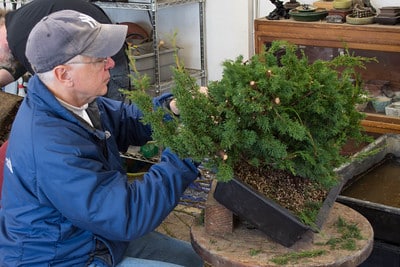
Cleaning out old foliage from a field-grown shimpaku
The repotting in particular was in full swing when I visited. The first step after removing a tree from the pot is combing out and cutting the roots on the bottom of the rootball.
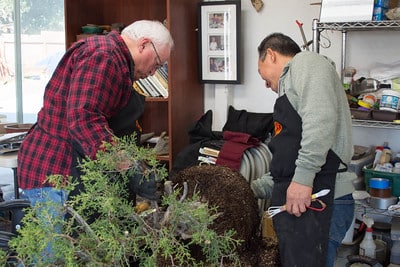
Starting with the bottom of the rootball
While this work is completed, the tree must be held horizontally to ensure the rootball is perpendicular to the ground.
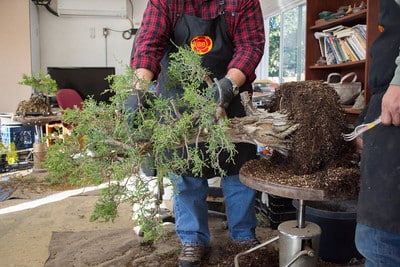
Keeping the tree level
Once the roots on the bottom of the rootball have been addressed, work begins on the top and sides of the rootball.
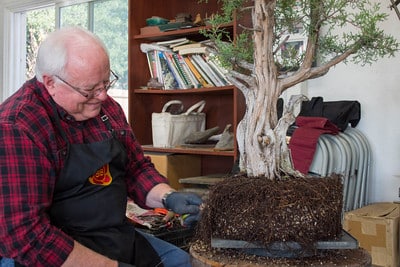
Combing out roots – root work is fun!
In an effort to maintain tree health, old soil, when present, is removed to make room for bonsai soil.

Removing old soil
Replacing nursery soil with bonsai soil is a common first step when working on material developed as nursery stock.
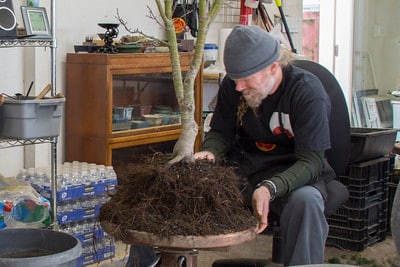
Removing old soil
Once the old soil has been removed from deciduous trees, the rootball can be rinsed off with water.
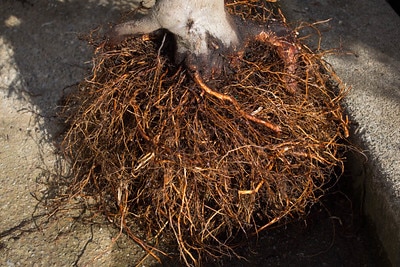
After hosing off the rootball
Even trees that have been developed for some time require good soil. Here’s a black pine after removing a patch of old soil.
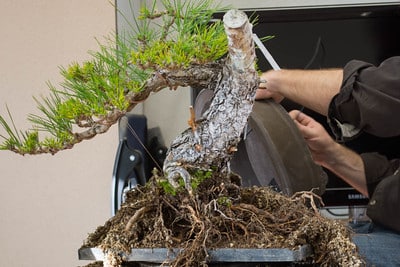
Black pine
During the repotting process, intensive participants practice the steps they learned with Boon’s guidance. Once the tree gets the OK, it is carried out and watered.

Repotting complete – time for water
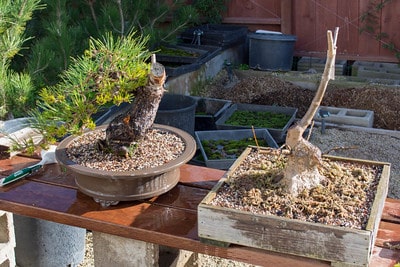
Recently repotted trees
If you’re curious to learn more about the Bonsai Intensive program, see the Course Description or contact Boon at bonsaiboon dot com.
Subscribe to Bonsai Tonight
New Posts Delivered Every Tuesday and Friday
carterbeall says
I feel like this may be an obvious question, but here goes. I understand that junipers are best pruned when dormant to prevent the formation of juvenile foliage, but will cuttings taken during the winter still root like those taken when the tree is actively growing? Is there any difference in methods(bottom heat, smaller/ larger cuttings, etc.)?
Jonas Dupuich says
Good question. Juniper cuttings will root best when the tree is somewhat active. Cuttings taken in areas with mild winters do fine – I’d expect cuttings taken from completely dormant trees and left outside in very cold temps won’t do as well. That said, if cuttings are taken from a dormant tree but kept in a greenhouse they can root quickly. Bottom heat can help with the temps are cold, and a variety of cutting sizes work well. Even larger cuttings can root if the conditions are good, and junipers can be root-grafted or air-layered if larger branches are desired. In general, junipers are one of the easier varieties to root.
Here’s the result from some cuttings taken years ago: http://bonsaitonight.com/2012/05/08/shimpaku-cuttings/
btw – this is a perfect question for ask.bonsaitonight.com as people living in a variety of climates can chime in.
carterbeall says
Thanks! I didn’t even know that that site existed but I will be sure to visit there often.